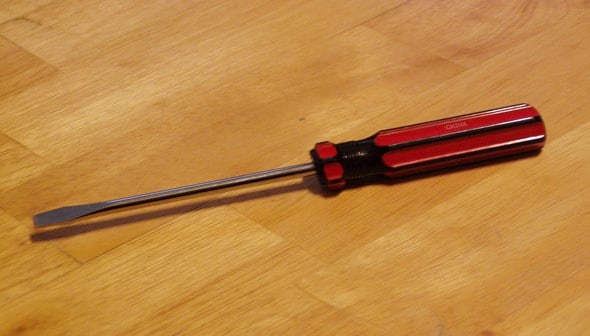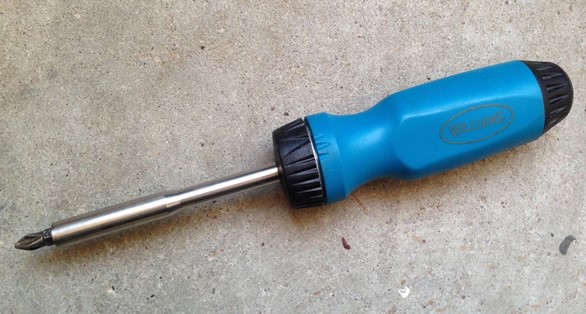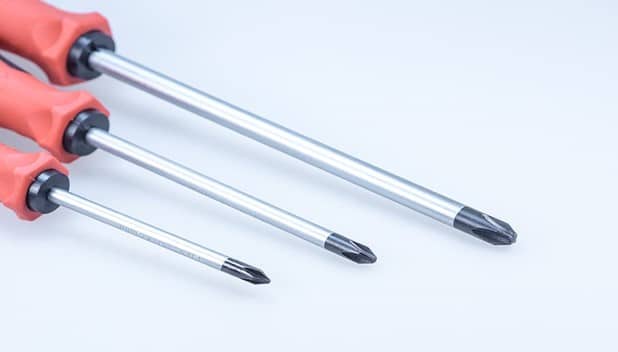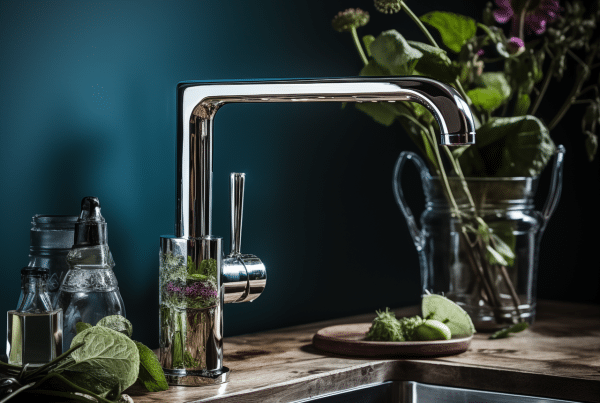Small-scale construction projects run smoothly with the use of appropriate instruments. Drill machines are quite an important part of handiwork. They are easy to work with and often make the project look neat.
However, using drill machines is not mandatory for all kinds of building projects. Some designs have a minimalistic theme and only require a couple of screws here and there. You can easily use simple tools such as hammers and screwdrivers instead of a drilling machine for such projects.
If you are wondering how to screw into the wood with a screwdriver, we have you covered. This article will guide you to use a screwdriver effectively to screw into a wooden board.
No products found.
Before We Begin, Here Is What You Should Consider

Home projects are time-consuming. You must spend considerable hours and energy to finish a certain project. Even when powerful electronic machines are used, you spend a lot of time completing the work at hand.
Simple tools such as a hammer or a screwdriver require more time to perform a task. There is no problem in choosing to use these tools over electronic machines. You just need to have the necessary amount of free time to finish your project accordingly.
How To Screw into Wood with A Screwdriver
- Plotting A Hole – The first thing you need to do is plot a hole into the board. Next, pick out a nail for hammering. The thickness of the nail should depend upon the size of the hole you will need for your screws. Once you have the right nail, neatly hold it on the mark and hammer it in. Be careful not to shift the position of the nail. Make clean, swift blows and hammer the nail straight in.
- Taking The Nail Out – The nail you hammer into the board will give you a hole for your screws. However, how the usefulness of the hole depends upon how neatly you take the nail out from the board. Use pliers to grip the nail and pull it right out. If the nail does not seem to budge, you may use the hammer& claw. Do not make any abrupt movements. Make sure that you do not damage the wood in the process. Once you get the nail out, you will be left with a nice hole. Repeat the steps as per the number of screws you need for the project.
- Selecting The Proper Screwdriver – Screws are available in a variety of sizes. There are as many types of small screws as there are large ones. Consequently, the head of each type of screw varies. One standard screwdriver cannot fit into the head of all screws. Therefore, you must pick a screwdriver as per the size of screws you intend to use for your project. There are screwdrivers with a wide tip, narrow tip, or even varying shank lengths. Select a screwdriver that fits into the head of your screws perfectly. Also, you must use a heavy screw if you are handling a thick piece of wood. This will ensure that all segments fix into the desired places neatly and tightly.
- Screwing In – Now comes the crucial step. Pick a screw and place its tip onto the hole you plotted in the beginning. Position your screwdriver & tip on the head of the screw. Firmly press on the screwdriver and start turning it in a steady clockwise motion. Do not reduce the firmness of your grip. Continue to turn the screwdriver until the screw is tight. Remember to pay attention to the alignment of the board. Avoid vigorous movement so that the alignment does not change. Being slow and steady is important because otherwise, you might end up cracking the wood. Repeat the process for the rest of the screws.
Thus, you can put screws into a wooden piece manually in 4 simple steps. Power tools such as electric drills are easier and quicker to work with. However, it is best to use simple tools in certain tricky circumstances.
When It Is Advisable to Ditch the Drill and Use a Screwdriver Instead

Rainy Weather or Wet Areas
Sometimes, using electronic machines can be quite risky. Especially while handling damp, wet places, using electric drills or other such machinery can be dangerous. To eliminate the risk of mishaps related to electricity, it is best to resort to screwdrivers instead of relying on electric drills.
Feasibility
While building projects typically involve a sizeable number of tools, some projects stick to the minimalistic theme. They are small-scale and do not require a lot of machinery. Under such circumstances, using heavy power tools becomes quite impractical. It is not feasible to use those tools for just one or two screws. It is advisable to use hammers and screwdrivers for such cases.
Tricky Angles and Other Reasons
Drilling machines are bulky. Sometimes, reaching an awkward angle with a drill machine can be quite a tricky business. The position or alignment of the object might not always be suitable for a big power tool. You can easily use a screwdriver and other simple tools then.
It is also imperative to use simple tools when safety equipment for bulky electronic machines is unavailable. Moreover, manual labor employed while using simple tools provides good muscle exercise. This can be an added benefit of ditching electronic gadgets.
In conclusion, it is possible to screw into a wooden object without using a drill. If you have enough time, you can easily use a screwdriver for the job.
All it needs is a little extra patience. Using a screwdriver instead of a drill machine needs more time. But it is almost as neat and effective as the latter.








